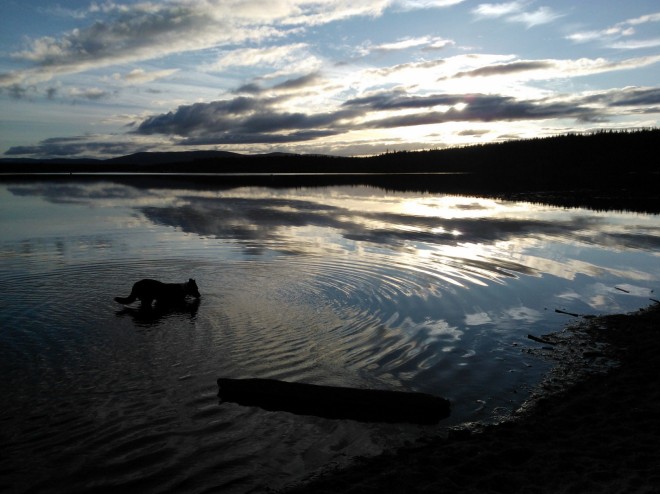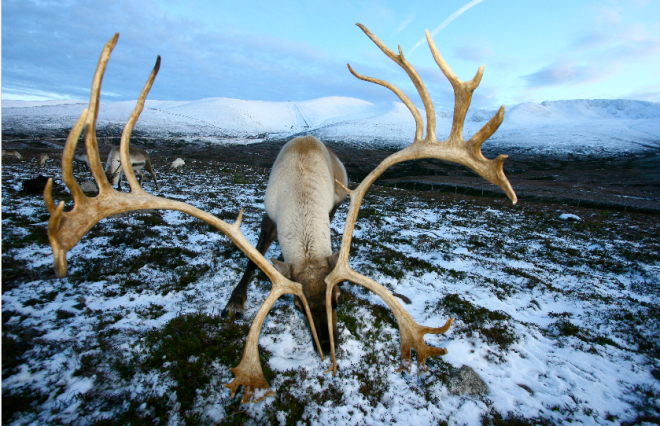
It’s always quite a contrast from central London where I work, to the hills of the Cairngorms, where I spend my holidays herding reindeer! This time I couldn’t get further away – a small group of reindeer herders headed up north to wildcamp at Sandwood Bay, one of the most northerly and remote beaches in Britain. After a long clear night (it didn’t really go dark), we headed back south to the Cairngorms where reindeer duties took over. It’s always very varied, from trekking to poop-scooping to manning the shop to taking guided visits.
Calving was finally coming to an end, one of the longest calving seasons there has been, so the last of the females were sent off to the free-range to get the best of the summer grazing on the high mountain tops with their calves, leaving just males in the enclosure to greet visitors. Apart from looking very scruffy at this time of year as their winter coats moult everywhere (I’ll be picking reindeer hair off my clothes for weeks to come in London!), they are also fairly greedy as they bulk up for the summer ahead of the rut in the autumn.

Following a good day’s work at the centre or out in the hills, I headed back out into the mountains for the evenings with the dogs, up to the snow line (yes there’s still snow up here – even in midsummer), to blow the city cobwebs away overlooking the Lairig Ghru or the Northern Corries.
Everything up here functions on a different time-frame. Unlike the city there is rarely any rushing, and meeting people up in the hills is unusual so you have a good old natter. Although the physical work can sometimes be tiring (especially the arrival of the feed lorry and the heaving of seemingly endless sacks into the shed), it is also quite relaxing. More steady than stressful!

Though it’s only a week in the hills, I always get a bit of a jolt returning to city life and the morning commute on Monday! The noise and the people and work kicks in and feels a parallel universe to the reindeer and the hills.
My next trip’s in the diary already.
Sarah H








